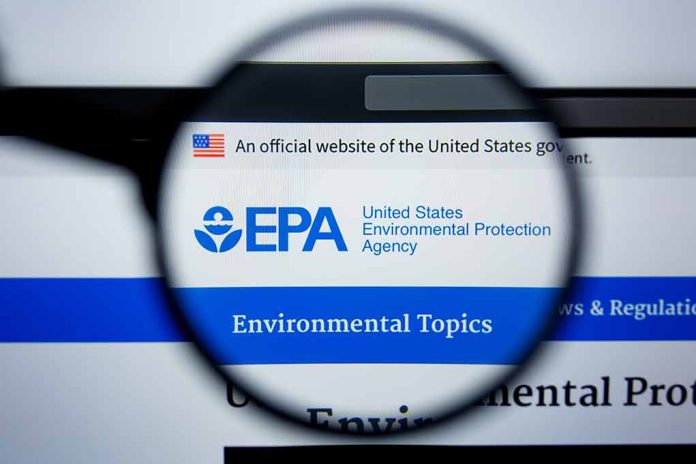
Mexico’s plan to dump 400 million gallons of sewage into the Tijuana River threatens U.S. territories, prompting San Diego officials to demand immediate federal intervention.
Key Takeaways
- Mexico plans to release approximately 400 million gallons of untreated sewage into the Tijuana River during maintenance on Tijuana’s sewer system.
- San Diego County Supervisor Jim Desmond calls for federal action, stating the U.S. should not be a “dumping ground” for Mexico’s pollution.
- The sewage crisis has led to beach closures, health hazards for residents, and disruptions to military training operations along the San Diego coastline.
- EPA Administrator Lee Zeldin plans to visit the area to address the cross-border environmental emergency.
- Local officials criticize both federal and state governments for insufficient action despite years of ongoing contamination.
Cross-Border Environmental Crisis Escalates
A major environmental dispute is intensifying along the U.S.-Mexico border as Mexican authorities prepare to release approximately 400 million gallons of sewage into the Tijuana River. This latest incident adds to decades of cross-border pollution that has devastated coastal environments in San Diego County. The sewage diversion is reportedly necessary due to essential repairs on Tijuana’s overtaxed sewer infrastructure, but rather than implementing alternative treatment solutions, the untreated waste will flow directly into the river and subsequently into U.S. territory.
San Diego County Supervisor Jim Desmond has become increasingly vocal about the situation, demanding federal intervention. The problem stems from Tijuana’s wastewater management practices – during maintenance operations, sewage is diverted into the river rather than to treatment facilities. Because the river flows northward across the international boundary, American communities bear the brunt of the environmental impact.
This is what it looks like when Mexico dumps millions of gallons of raw sewage into the United States.
This isn’t just pollution, it’s a health and environmental crisis, plus a national security threat due to the proximity of the Navy Seal training.
And it’s getting worse:… pic.twitter.com/5l79u9qnVp
— Supervisor Jim Desmond (@jim_desmond) April 4, 2025
Local Officials Demand Federal Action
Frustration among local officials has reached a boiling point as they struggle to gain national attention for what they consider an international environmental emergency. The impact on American communities has been severe, with the toxic runoff affecting beaches, public health, and even military operations.
“Instead of rerouting the flow during maintenance, they’re choosing the easy way out—dump it into the U.S. and make it our problem. This is unacceptable. Our communities, beaches, and environment deserve better. It’s time for federal action. We cannot continue to be the dumping ground for another country’s pollution,” said Desmond.
Imperial Beach Mayor Paloma Aguirre has criticized both the Biden administration and California Governor Gavin Newsom for insufficient action despite multiple appeals for assistance. Imperial Beach has been particularly hard hit, with its shoreline ranking among the most polluted in the United States. Although Newsom attended a groundbreaking ceremony for a new wastewater treatment plant in the area, Aguirre remains skeptical about the facility’s ability to significantly reduce the ongoing crisis.
Widespread Health and Environmental Impacts
The sewage contamination extends far beyond mere unpleasant odors. Beaches along the San Diego coastline face regular closures due to dangerous contamination levels, while residents near the river and coastal areas report respiratory issues and other health concerns from the toxic fumes. The situation has become so severe that it now affects military readiness, with Navy SEALs and recruits who train in the coastal waters facing potential health hazards from the polluted runoff.
Areas near the border, including locations adjacent to shopping centers and residential communities, suffer from the persistent stench of raw sewage. Children and elderly residents are particularly vulnerable to the health impacts. The contamination has transformed what should be valuable recreational spaces into hazardous zones, disrupting community life and damaging the local economy through reduced tourism and property values.
Potential Solutions and Path Forward
Lee Zeldin, the recently appointed EPA administrator, has announced plans to visit the affected area and has called for Mexico to implement solutions quickly. Local officials continue to press for a federal emergency declaration, which would unlock additional resources and focus national attention on the problem.
The construction of new wastewater treatment facilities represents one step toward addressing the crisis, but many local leaders believe a comprehensive binational solution is necessary. They argue that without significant diplomatic pressure and investment in Tijuana’s sewage infrastructure, American communities will continue to suffer from their neighbor’s pollution. Until substantive action is taken on both sides of the border, the Tijuana River will remain a conduit for environmental contamination flowing directly into United States territory.









